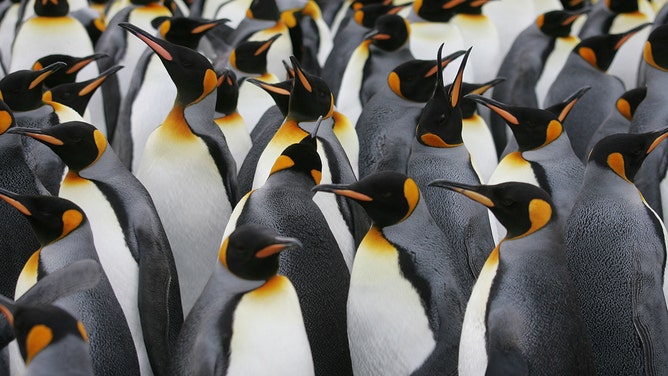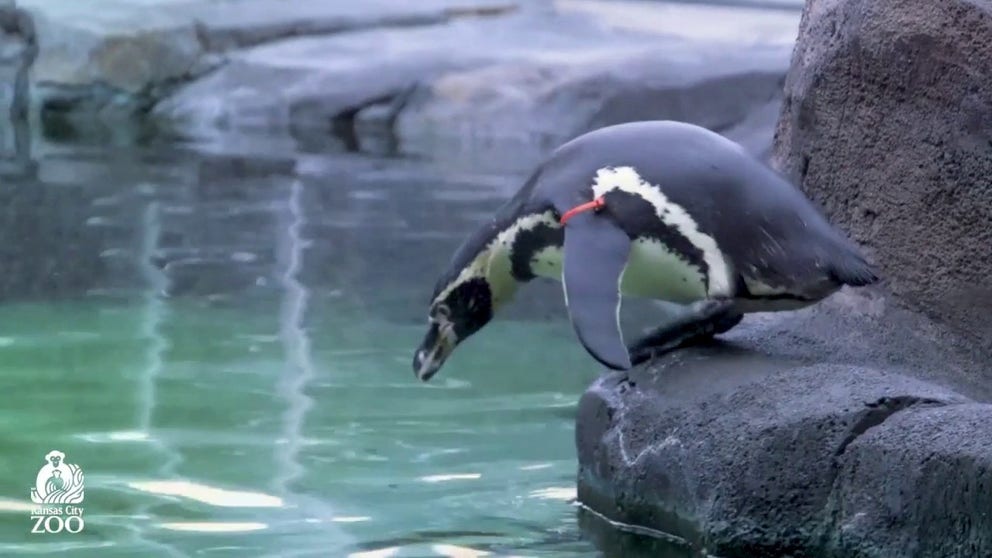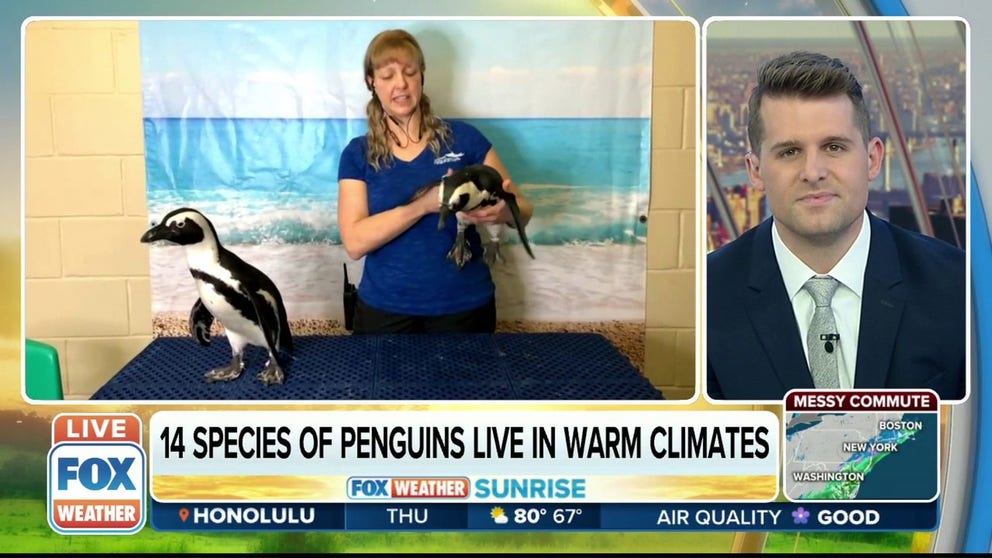7 things you probably don’t know about penguins
If you're lucky enough to live near a zoo with a penguin exhibit, go for a visit on National Penguin Day observed on January 20
7 things you probably don't know about penguins
Whether it's seeing them up close or watching a documentary, people are fascinated with penguins. Here are seven things the Kansas City Zoo says you probably didn't know about penguins.
KANSAS CITY, Mo. – Whether it's seeing them up close or watching a documentary, people are fascinated with penguins. Maybe that's one reason why we observe National Penguin Day on Jan. 20 to celebrate them.
Dozens of zoos across the county currently maintain one or more species of penguins.
The Kansas City Zoo's Helzberg Penguin Plaza opened its doors in October 2013 and is currently home to king, macaroni, gentoo, and chinstrap penguins. They also house a family of Humboldt penguins that live in a separate warm-weather habitat.
The zoo even offers a 4K penguin camera so that anyone can watch them swim and stroll around in their cold-weather habitat.
In May 2020 when the Kansas City Zoo was closed due to the pandemic, zookeepers were still actively caring for their animals, including adding enrichment experiences to stimulate their minds. The Nelson-Atkins Museum of Art invited the zoo's Humboldt penguins for a morning of fine art and culture.
Yes, all the penguins at the Kansas City Zoo have names, and they are all identifiable by the bands they wear on their wings.
Elvis, of the zoo's chunkier king penguins, can be easily spotted because he wears the feathers down near his stomach every year. Zoo officials believe it is from him rubbing his belly on the ramps as he gets out of the pools.

A colony of King penguins is pictured on July 1, 2007, on Possession Island in the Crozet archipelago in the Austral seas.
(MARCEL MOCHET / Getty Images)
In the wild, penguins live in very large groups and in close quarters. However, they need space to swim, nest, and rest – something the Kansas City Zoo offers at the Penguin Plaza. And did you know the air and water in their enclosure are both kept at 45 degrees? The lighting inside is also set to simulate their natural habitat.
If you are lucky enough to catch a live feeding on the stream, you are in for a treat. Well, technically, the penguins are since they are fed twice per day – at 10 a.m. and 3 p.m. Central Time. Plus, they get to eat as much as they want. However, the zoo said how much each penguin eats is recorded to help monitor their health.
Learn all about penguins at the Kansas City Zoo
The Kansas City Zoo's Helzberg Penguin Plaza opened its doors in October 2013 and is currently home to king, macaroni, gentoo, and chinstrap penguins. They also house a family of Humboldt penguins that live in a separate warm-weather habitat.
Another interesting fact: Once a year, each penguin will shed its feather and grow new ones. You’ll be able to tell when this is happening because the molting makes the penguins look scruffy.
But, you might alright have known some of these cool facts already. Here are seven things the Kansas City Zoo says you probably didn't know about penguins:
1. Raft vs. waddle
A group of penguins in the water is called a raft but on land, they are called a waddle.
2. What's that smell?
Penguins have a very fast metabolism and poop every 20 minutes.
3. A black-tie affair
The black and white "tuxedo" look of most penguin species is a form of camouflage called countershading. The black on their backs helps them blend in with the darkness of the ocean from predators viewing from above, while their white bellies help them blend in with the bright surface of the ocean when viewed by predators from below.
Learning more about African Penguins on National Penguin Day
Colette Fardella, with the Long Island Aquarium, shares some insights on African Penguins on National Penguin Day.
4. Gold medal swimmers
Gentoo penguins are the fastest of all penguin species, reaching speeds of up to 23 mph, which is four times faster than any Olympic swimmer.
5. The high dive
Penguins are expert divers with the Emperor penguin diving to over 1,700 feet. Gentoos can dive to 650 feet and the King penguins can dive to over 1,100 feet.
6. Look at those feet!
Penguins are known for their swimming abilities, but their feet are also designed to walk upwards of 60 miles across the sea ice to reach their breeding grounds.
7. Not all about cold
You’ll never see a penguin living in the same place as a polar bear; all penguins live in the Southern Hemisphere. Believe it or not, 14 of the 18 species of penguins live in temperate or warm climates.


